
Sakushinkan
The school that cultivates the spirit
Sakushinkan is a martial arts school that originates from the ancient schools, called koryu, which constitute its most remote and martial sources.
The perception of modern martial practice as incomplete and the desire to return to a method and philosophy more rooted in tradition led to the foundation of the Sakushinkan school in 2000 by Venerable Seiun, a buddhist monk and master of martial disciplines. He received direct teachings from Kaminaga Shigemi Sensei, who was a disciple of Ueno Takashi Sensei, both belonging to the lineage of Takamatsu Toshitsugu Sensei. The school's strongest ties are established with Amatsu Tatara and Shugendo: the former being a collection of knowledge about the comprehensive formation of a person; the latter being a path of practice rooted in the history of yamabushi, the mountain monks.
The main purpose of these teachings is, therefore, to build, step by step, the most inner part of the individual, creating a powerful educational method that supports and guides personal development and growth. In fact, the meaning of the word "Sakushinkan" refers to a "school that cultivates the spirit," specifically the spirit that is the backbone of the teachings and experiences originating from the East, especially from Japan.
 |  |  |  |
|---|---|---|---|
 |  |  |  |
 | 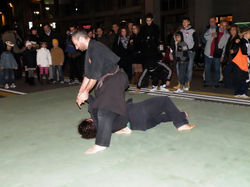 | 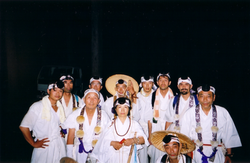 |

Sakushinkan Budo
The school's training method
The Sakushinkan Budo is the method of traditional martial training according to Sino-Japanese schools within the Sakushinkan school. The main purpose of this method is the comprehensive development of the individual, which operates in three spheres of action: martial, spiritual, and medical.
The martial sphere, called Bumon, involves the practice of Sogo Bujutsu, which includes multiple war arts, both armed and unarmed. This sphere originates from the teachings of different Koryu, the ancient schools. The teachings of these schools have later merged into the tradition of Amatsu Tatara, whose lineage continues in our school.
Within the martial sphere, the disciplines of hand-to-hand combat included are Taijutsu, Jujutsu, Kempo, Karatejutsu, and Goshinjutsu. Additionally, starting from a certain level, armed disciplines are studied following the tradition derived from various Ryu (schools). These include the study of the 18 weapons, such as Bojutsu (staff techniques), Kenjutsu (sword techniques), and other types of weapons (e.g., Naginatajutsu, Shurikenjutsu, Tantojutsu, Kusarifundojutsu).
The spiritual sphere, Shumon, follows the teachings of Shugendo, the path of mountain monks (Yamabushi), and mainly involves the practice of meditative techniques.
Lastly, the medical and rebalancing sphere, Yakumon, encompasses knowledge related to the Onmyodo method, including certain finger pressure, percussion, rubbing techniques, and the use of oils for medicinal purposes. It also includes exercises such as kiko, do-in, and taiso, for restoring the correct energetic flow and maintaining the organism's health.
 | 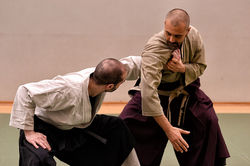 | 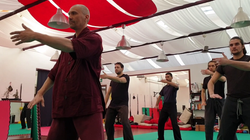 | 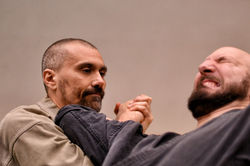 |
|---|---|---|---|
 |  |  |  |
 |  |  |  |
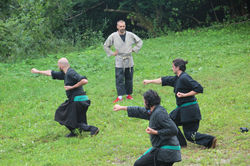 |  |  |  |
 |  |  |

Indeed, the temple not only serves as a place for martial practice but also as the spiritual abode of Sakushinkan, where students, regardless of their religious beliefs, follow the spiritual teachings and practices guided by Master Ven. Seiun for their inner growth. Although the religious aspect is clearly present within the temple's walls, for the Sakushinkan school, this place was born with similar but not identical purposes: to provide martial training and spiritual guidance for the inner development of its students. In fact, it is here that the most direct contact with the lineage tradition continued by Sakushinkan takes place.
However, the role of Tenryuzanji extends beyond the boundaries of our school. The temple serves as a place of meditation, study, silence, contemplation, well-being, and listening for many individuals, allowing them the opportunity to experience prayer, meditation, and other activities aimed at their inner growth.
 |  |  |  |
|---|---|---|---|
 |  |  |  |
 |  |  |  |
